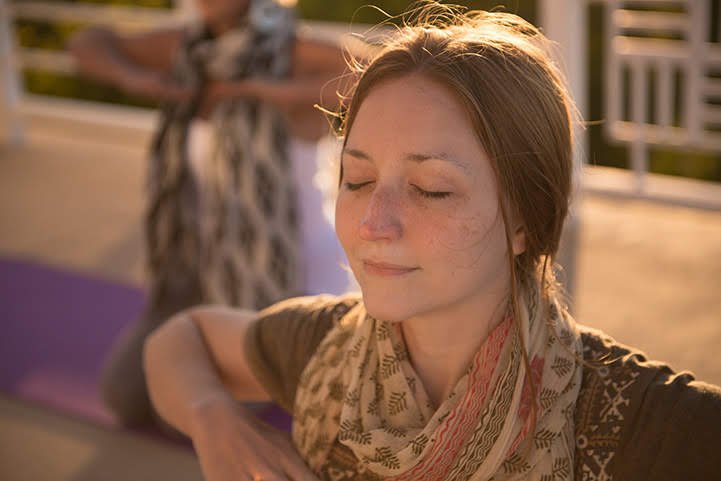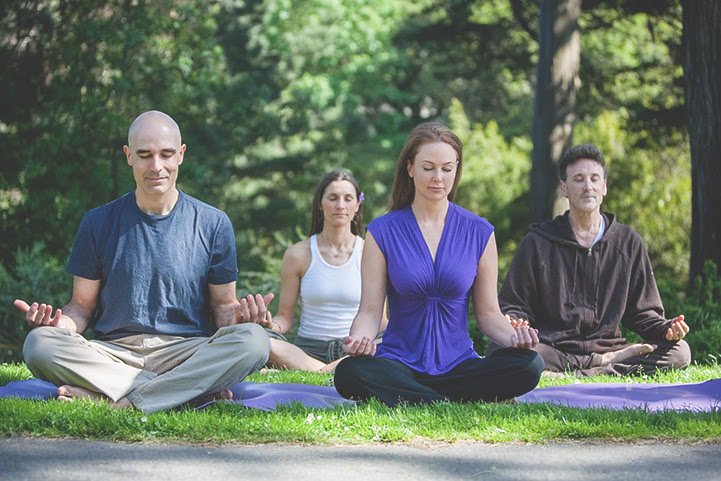
Benefits
Discover effective meditation techniques to boost your mental health and cultivate everyday calm. Read on for practical tips to enhance your well-being.
Meditation has emerged as a vital tool to combat stress in our modern world. This ancient practice dates back thousands of years and helps people clear their minds of daily stress. The practice brings inner peace and calm that enhances emotional well-being and overall health.
The connection between meditation and mental health reveals fascinating evidence. Research has demonstrated the positive impact of meditation on brain health. The practice disrupts the connection between two key brain regions: the medial prefrontal cortex and the amygdala. People can handle stress and anxiety more effectively. This can reduce the risk of depression. Meditation’s benefits extend beyond mental health. The practice strengthens our immune system and makes us happier. It improves how our bodies respond to positive emotions.
One of the things I love about meditation is its simplicity and effectiveness. This piece explores practical meditation techniques that deliver results. You’ll discover mindfulness practices and specialized breathing methods. These techniques assist in managing depression symptoms.
About 20% of people over 65 experience these issues. These techniques work for both beginners and experienced practitioners. They help anyone incorporate the benefits of meditation into their daily life.
Meditation is a way to help you focus and clear your mind. It combines mental and physical techniques. This ancient practice has been around for thousands of years. It remains important today, as modern science demonstrates its significant impact on our mental well-being.
The mind-body connection shows how our thoughts and feelings impact our physical sensations. This connection isn’t just philosophical—it’s biological. Stress and negative emotions can show up as physical symptoms. You may experience headaches, digestive issues, or muscle tension.
Think about this: just imagining a lemon can make your mouth pucker. You might feel butterflies in your stomach or sweaty palms before speaking in public. These reactions illustrate how our mental states can have a direct impact on our physical bodies.
Meditation bridges the gap between mind and body. Meditation helps your body manage stress better. It also encourages relaxation. Your heart rate, breathing rate, and blood pressure decrease. This response balances out the fight-or-flight reaction many people experience in stressful situations.
New imaging techniques have changed how we understand meditation’s effects on the brain. EEG and fMRI scans show that meditation helps brain function and boosts mental health.
Research using intracranial EEG shows that meditation affects the amygdala and hippocampus. These regions are essential for emotional regulation and memory. Studies show that experienced meditators have different brain structures than those in matched controls. Areas involved in interoception and attentional processes become thicker.
Regular meditators’ brains typically show:
These changes last. A 2012 study found that brain activity changes lasted in people who learned to meditate, even when they weren’t meditating. This suggests meditation creates lasting neuroplastic changes that benefit you throughout daily life.
Mindfulness meditation involves intentional, non-judgmental, moment-to-moment awareness. You learn to recognize thoughts and emotions as “mental events.” You observe them without judgment or analysis. Observing your feelings with kindness lays the groundwork for emotional balance.
Your mind often wanders during mindfulness meditation. You learn to notice this and gently return attention to your breath or chosen focus. This simple act trains your brain to respond rather than react to emotional triggers. As Jon Kabat-Zinn, a proponent of mindfulness, has said, “You can’t stop the waves, but you can learn to surf.”
Mindfulness improves emotional balance in several ways:
Mindfulness-based cognitive therapy (MBCT) works especially well if you have depression. Patients with three or more past depression episodes cut their relapse risk by almost 40% in the next year. This happened after six months of mindfulness practice combined with cognitive therapy.
Techniques for breathing, such as those from the Art of Living Foundation, improve these benefits. Research shows that Sudarshan Kriya (SKY Breath Meditation), a rhythmic breathing practice, greatly reduces anxiety, depression, and stress. It also boosts emotional well-being. These techniques balance the autonomic nervous system. They help you keep emotional stability, even in challenging times.
Regular mindfulness meditation trains you to notice your thoughts and feelings. This way, you can observe them without feeling overwhelmed. This gives you the freedom to choose your responses instead of being driven by automatic reactions—a skill that forms the lifeblood of mental health and emotional balance.
Science shows that people who meditate regularly experience remarkable mental health benefits. Meditation goes deeper than quick fixes. It addresses the root problems of many mental health issues.
Meditation works as a natural stress-fighter by changing how our body reacts to stress. Our brain responds differently to stress and anxiety when we meditate. This change occurs because meditation disrupts the connection between two key brain regions: the prefrontal cortex and the amygdala.
People often start meditating to reduce their stress levels. Research shows that meditation lowers both stress and anxiety symptoms. A thorough review of over 200 studies proved that mindfulness therapy worked especially well to curb stress and anxiety.
The Art of Living’s Sudarshan Kriya Yoga technique is an effective way to reduce stress. This breathing practice activates our body’s natural relaxation system and counteracts the “fight or flight” response that many people experience constantly.
Staying focused has become increasingly challenging in our increasingly distracting world. Our mind wanders about 47% of the time. Regular meditation helps train attention and makes thinking clearer.
Focused meditation works like a gym workout for your attention span. Neuroscientist Giuseppe Pagnoni discovered that meditation changes how the brain works. This change helps people focus better and can lead to improved brain performance. His research found that experienced meditators control wandering thoughts better. This is due to increased stability in their ventral posteromedial cortex (vPMC).
Just 10 minutes of mindfulness can make a difference. Research at the University of Waterloo showed it helps stop repetitive thought patterns that often lead to anxiety and depression.
Approximately 35% to 50% of adults worldwide have trouble sleeping. Meditation can improve your sleep naturally. It brings about changes in your body that aid in relaxation.
A 2018 review of 18 studies found that mindfulness meditation improved sleep. The benefits lasted from 5 to 12 months. These improvements happen because of meditation:
Meditation helps you stay aware without trying to force sleep, which often doesn’t work. This practice can calm your mind and body.
Depression impacts around 20% of adults over 65. It can also worsen heart disease and other health issues. Meditation helps the brain manage stress and anxiety. It also reduces triggers for major depression.
Meditating for 30 minutes a day over eight weeks increased gray matter in the hippocampus. This matters because people with recurring depression usually have smaller hippocampi.
Research shows that meditation therapy helps people with clinical depression. It works during severe episodes and recovery phases. The benefits were greatest for those facing major depressive episodes, not just lingering symptoms.
Emotional resilience enables you to bounce back from stress and challenging times. This might be meditation’s most valuable long-term gift. Daily practice allows you to focus calmly and gain insight into how your mind works.
Meditation teaches you to choose what you focus on. You learn to watch your emotions instead of letting them sweep you away. This creates space between you and your feelings, helping you stay steady when life gets rough.
Mindfulness meditation helps you take a step back. It allows you to observe and let go of difficult thoughts and feelings. This builds inner strength that helps you weather life’s challenges better.

Q1. How does meditation benefit mental health? Meditation has many benefits for mental health. It helps reduce stress, improve focus, and better regulate emotions. It also boosts self-awareness. Practicing regularly can ease anxiety and depression. It can also improve sleep and strengthen overall psychological resilience.
Q2. What is mindfulness meditation, and how does it work? Mindfulness meditation involves focusing on the present moment without judgment or attachment. It works by training your focus and awareness. This helps to reduce the link to the brain’s stress centers. This practice can reduce rumination, improve emotional balance, and enhance overall mental well-being.
Q3. How long should I meditate to see mental health benefits? Even short periods of meditation can be beneficial. Begin with 2-5 minutes each day. As you become comfortable, increase the time to 15-20 minutes. This can greatly boost your mental health. Regular practice matters more than how long you practice. So, focus on being consistent instead of having long sessions.
Q4. Can meditation help with specific mental health conditions like depression and anxiety? Yes, meditation has shown promising results in managing depression and anxiety. Studies on techniques like Sudarshan Kriya show high remission rates for both conditions. Meditating regularly can lower symptoms. It changes brain function and boosts emotional regulation.
Q5. What are some simple meditation techniques for beginners? Beginners can begin with basic techniques. For example, they might practice mindfulness breathing, body scan meditation, or guided visualizations. These practices are easy to learn and can be done in short sessions. Meditation apps and guided sessions can help beginners build a regular practice.
Finding the right meditation technique can boost your mental health. Many people think meditation means sitting cross-legged for hours, but that’s not true. You can get real benefits from just a few minutes each day. Here are six proven techniques you can use right now to improve your mental health.
Mindful breathing is the foundation of many meditation practices. This simple technique enables you to focus on your breath as it flows in and out, keeping you anchored to the present moment.
Begin by sitting comfortably with a straight back and your feet flat on the floor. Watch your breath move in and out of your body. Your mind might wander – that’s normal. Notice those thoughts and bring your attention back to your breathing. Even 60 seconds of mindful breathing can help clear negative thoughts.
Studies have shown that focusing on breath helps individuals concentrate better and reduces stress. People who practice regularly tend to feel more relaxed and manage their emotions more effectively, which in turn leads to improved mental health.
The Art of Living’s breathing methods, such as Sudarshan Kriya, incorporate rhythm-based breathing patterns. Scientists have verified that these techniques reduce anxiety, depression, and stress. They boost emotional well-being by balancing the autonomic nervous system.
Body scanning helps you connect with physical sensations and release hidden tension. This works especially when you have stress-related symptoms like headaches, back pain, or heartburn.
Lie on your back, legs stretched out and arms by your sides. Move your attention slowly through each body part from head to toe. Notice any feelings, emotions, or thoughts that come up. If you find tension anywhere, breathe into that spot and picture the stress flowing away.
Scientists have found that body scanning leads to better mindfulness and mental well-being. This technique is often used to help manage pain.
Loving-Kindness Meditation (LKM) helps you develop compassion for yourself and others. First, focus on generating positive feelings toward yourself. Next, move on to your loved ones, then neutral individuals. After that, try with difficult people, and finally, embrace everyone.
Find a comfortable spot and focus on breathing. Picture someone who loves you completely and take in their kindness. Then accept your own worth with phrases like “May I be happy,” “May I be safe,” and “May I be healthy.” Gradually extend these wishes to others.
Research shows LKM reduces self-criticism and improves relationships. The Harvard Review of Psychology says this practice may help with chronic pain and borderline personality disorder.
Mantra meditation uses repeated words or phrases to help you focus and stop mind wandering. Your mantra becomes a tool to free your mind and sharpen concentration.
Pick a word or phrase that appeals to you – something simple like “peace,” “calm,” or the traditional Sanskrit “Om.” Say it quietly or out loud while focusing on its sound and rhythm. Let your breathing naturally match the rhythm of the repetition.
Mantra-based techniques utilize sounds, often in Sanskrit, which are repeated mentally rather than spoken aloud.
A 2014 study found that older adults with memory problems had better blood flow to their brains and improved cognitive function. This improvement happened after 8 weeks of mantra practice.
Walking meditation turns a simple activity into a mindful practice. This works great if you can’t sit still and can do it anywhere, such as at home or in a quiet park.
Select a quiet path that is approximately 10 to 30 steps long. Walk at a slower pace than usual and pay attention to how your feet and legs feel. Notice each foot lifting, moving, and touching the ground. When thoughts drift, bring your focus back to walking.
Buddha shared five benefits of walking meditation:
Visualization helps you create detailed mental pictures to achieve specific feelings or goals. Many people find this excellent for reducing stress and achieving their objectives.
Close your eyes and build a mental picture of a peaceful scene or a successful outcome. Use all your senses – imagine the sights, sounds, smells, textures, and tastes. You might picture yourself in nature, taking in every detail.
Research indicates that visualization can improve overall well-being. It reduces stress, enhances focus, and aids in managing fear. Athletes often use this technique. Research shows they can build muscle strength just by practicing mentally.

The Art of Living Foundation goes way beyond traditional meditation by offering specialized breathing techniques that help address mental health challenges. Ancient yogic practices are now recognized worldwide. They help promote emotional balance and build mental strength.
Sudarshan Kriya Yoga (SKY Breath Meditation), the foremost technique of the Art of Living, uses rhythmic, cyclical breathing with slow, medium, and fast breath cycles. The Sanskrit name translates to “proper vision through purifying action,” highlighting its role in cleansing at the cellular level.
This complete practice has four main parts:
These breathing techniques help calm the mind and promote inner happiness. One practitioner said, “I used to be over-analytical in life. With regular practice of Sudarshan Kriya, I am nowhere near as tense and much happier than before”.
The benefits are not just stories. Over 60 independent studies from four continents show their real impact. Research in peer-reviewed journals indicates that Sudarshan Kriya significantly reduces stress markers. Cortisol and blood lactate levels decreased by 78% and 87.5%, respectively.
Studies show that depressed patients saw a 68-73% remission rate within one month of SKY practice. Research also found anxiety decreased by 44%, and 71-98% of participants recovered completely.
Yale University researchers found that college students who practiced SKY improved in six areas:
People who consistently apply Art of Living techniques experience life-changing benefits. Many sleep much better, spending three times more time in deep, restful sleep. A homemaker shared, “I slept like a baby after ages, the day I did the first Sudarshan Kriya”.
The practice brings mental clarity and better decision-making skills. William, a senior system analyst at NASA, finds that this practice boosts his mental clarity and stamina. He says, “As an engineer, I need to be both analytical and critical.” Sudarshan Kriya and meditation improve these abilities”.
The techniques also help individuals handle negative emotions more effectively. Practitioners develop more patience and emotional strength. Tina, a mathematician, says, “I’m more relaxed about challenging situations at home and work, and more patient with people”.
A regular meditation practice lets you experience its full mental health benefits. Most people are aware of meditation’s benefits, but they often struggle to stick with it. Let me share some practical ways to establish and maintain your meditation habit.
The time you pick matters less than doing it every day. You may enjoy morning meditation to start your day calmly or evening sessions to unwind and let go of stress. Select a time that suits your daily schedule. As meditation teacher Sharon Salzberg notes, “The most important moment in your meditation practice is the moment you sit down to do it.”
Your brain needs signals to get into a focused, calm state. A dedicated meditation space helps with this. You don’t need anything fancy—a quiet corner away from distractions works well. A candle, a plant, or a soft blanket can make your space feel more welcoming.
Starting with just 2-5 minutes each day works great for beginners. The quality of your meditation matters more than the duration of your sitting. You can add a few minutes each week as you become more comfortable, until you reach 15-20 minutes a day.
Focus on intentions like “being more mindful” or “reducing stress” rather than specific results. Meditation focuses on the process, not perfection. Art of Living techniques, including Sudarshan Kriya, demonstrate that even brief sessions can be beneficial when practiced regularly.
Beginners often find structure and accountability through meditation apps. Guided sessions help bring your wandering mind back to the present moment. These sessions make meditation more available to everyone. Many apps also offer meditations that focus on mental health. Here are three commonly used mediation apps:
Here are two I recommend:
Keeping track of your meditation trip helps you stay committed. Meditation apps display statistics such as your current streak and total minutes. These can motivate you visually. Many people find that reviewing their progress charts helps them see how meditation is connected to positive changes in their lives.
Writing in a journal after meditation helps capture your insights and emotional changes. The most meaningful progress shows up in daily life—better sleep, easier stress management, and improved focus. These real-life benefits motivate you to keep going with your practice.
Meditation presents challenges even to seasoned practitioners. Your success depends on understanding these obstacles and having strategies to overcome them. Understanding this can really matter. It can push you to keep going. You may then experience the mental health benefits of meditation.
Your mind naturally wanders during meditation – it’s what minds do. The moment you notice your attention has drifted shows your growing awareness. This recognition marks progress, not failure.
These simple techniques help when thoughts interrupt your meditation:
Art of Living techniques utilize specific breathing patterns that naturally anchor your attention. These rhythmic breaths give you a compelling focal point and help prevent your mind from wandering too much.
New meditators often want their minds to become quiet and peaceful right away. This expectation creates tension. Treat meditation like an experiment. Focus on learning, not perfection. You’ll gain more this way.
Let go of labeling sessions as “good” or “bad.” The less you expect, the more open you become to what emerges. The most significant progress often happens when nothing feels different. This is because the effects of meditation are subtle and take time to notice.
Regular practice matters more than the duration of your meditation or how well you think you performed. Start with three minutes daily instead of lengthy sessions that might overwhelm you. Missing a day shouldn’t worry you – just resume your practice without criticizing yourself.
Allow yourself a reasonable trial period, such as two weeks or a month. During this time, commit to meditating on whatever you experience. This approach helps you work through common challenges, such as boredom or restlessness.
The Art of Living breathing practices support consistency. They deliver quick relaxation, making it easier to stay committed to your routine.
We found that meditation, an ancient practice, can help with today’s mental health challenges. Meditation works as a powerful tool not just due to its historical roots. Modern science backs up its effectiveness. It reduces stress by breaking connections between the prefrontal cortex and the amygdala. The practice enhances brain structure in regions that regulate emotions. These changes are measurable in our minds and bodies.
Scientific evidence supporting Art of Living techniques, such as Sudarshan Kriya, shows promising results. Studies reveal impressive numbers – 73% remission rates for depression and 98% for anxiety. Physical stress markers, such as cortisol and blood lactate levels, drop significantly with regular practice. These findings confirm what thousands of practitioners worldwide already know – breathing techniques transform mental wellbeing.
The meditation style that appeals to you might be mindfulness breathing, body scanning, loving-kindness, mantra repetition, walking meditation, or guided visualization. What matters most is consistency, not technique. Your mind will wander during practice. Each gentle return to focus builds mental strength. Setting realistic expectations helps prevent frustration along the way.
Meditation gives us something precious in our hyperconnected world – space to just be. Those moments of conscious breathing and present-moment awareness help us develop calm and clarity. This mental clarity enables thoughtful responses instead of impulsive reactions to life’s challenges.
Starting a meditation routine may seem daunting. The benefits outweigh any initial struggles. Begin with three minutes daily and build from there. Soon, meditation becomes more than just an activity. It becomes a way of life, fostering greater awareness, compassion, and balance.
The path to mental well-being requires dedication and perseverance. Unlike methods that mask symptoms, meditation tackles the mechanisms of psychological distress. It changes how our brains process experiences. These positive changes last beyond meditation sessions and enhance our ability to navigate our daily lives.
Meditation gives us a special gift. It helps us find peace by changing how we relate to our thoughts and feelings. We no longer depend on what happens outside us. This piece serves as more than information. Take a moment to breathe deeply. Sit quietly. You’ll discover great mental health benefits within yourself.
If you’re seeking a natural, powerful way to manage stress, anxiety, and emotional overwhelm, it’s time to go beyond theory and into direct experience. The Art of Living Part 1 Course introduces you to Sudarshan Kriya, a unique breathing technique that has transformed millions of lives worldwide.
This isn’t just meditation—it’s a daily reset for your nervous system, proven to reduce cortisol levels, improve sleep, and elevate your overall well-being.
✨ Join the next course and discover what deep rest and clarity really feel like.
Your mind deserves the same care you give your body. Take the first breath toward a lighter, calmer, more joyful you.
👉 Register here and let your breath lead the way to better mental health.












